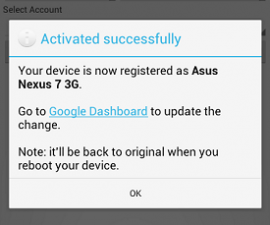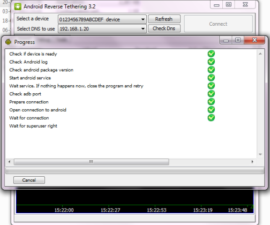How To Change The Display Density Of A Nexus 6 display density
The Nexus 6 leaves a lot of space free on its screen and in this guide, we’re going to show you a few methods you can use to make your screen bigger and also add an extra row of icons on your app drawer.
Method 1: By using the ADB commands
- First, go to your device’s settings and from there, go to developer options and enable USB debugging mode.
- Secondly, download and install ADB Tools on your PC.
- Now, connect your device to the PC with your USB cable.
- When you have made the connection, open Windows Explorer on the PC and then open the ADB Tools folder.
- Open a command window in the ADB folder. To do so, you hold down shift while right-clicking on any empty space.
- To check that your device is recognized, type the following command into the command window:
adb devices
- You should see a number in the command windows identifying your Nexus 6. If you don’t then download and install Google USB Driver and then repeat step 6.
- To change your display density, type in the following command:
adb shell wm density 480
- Reboot your device; you should see changes on your screen now. NOTE: The default display density is 560. You can play around with this, making it higher or lower as suits you by just changing the number in the command you typed in step 8.
- If you want to return to the default display density, type the following:
adb shell wm density reset
Method 2: By editing the build. prop file
This method can only be used with a rooted device. If your device isn’t rooted yet, root it before attempting this method.
- Download and install ES Explorer from the Google Play store.
- When you have installed the ES Explorer app, launch it.
- Make sure that Root explorer is enabled.
- Go to device/system. From here, you will see a number of folders, scroll down until you find build.prop. Tap build.prop.
- You should now see a pop-up. Select the option ES Note Editor.
- You will see a pencil icon on the top right corner, tap it. Scroll down until you see “ro.sf.lcd_density=560”.
- Change the number 560, which is the display number, to change the screen density. We suggest you start with 480. If this doesn’t work for you, you can go back.
- When you’ve changed the number, press the back arrow key to exit. Then tap save.
- Reboot your Nexus 6 and see the effect.
Have you changed the screen density of your Nexus 6?
Share your experience in the comments box below.
JR







bookmarked, terrific internet site!
Excellent post, i did read it two times so sorry for this, i have passed it on to
my mates, so confidently they should like it as
well.